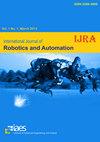A Survey on Flood Alert System Using IoT
IF 1
4区 计算机科学
Q4 AUTOMATION & CONTROL SYSTEMS
引用次数: 0
Abstract
Dam overflows are a constant threat throughout the year to the India. There are various methods of alerts available; such as the Emergency Broadcast System can alert a user remotely in an efficient and timely manner. The system goal of project is to provide a real- time system able to monitor sudden overflows in dam lots, addressing the concern of water damage to vehicles; creating a personal alert that could reach an end user through their mobile phone using GSM. In this case, the system defines two types of nodes sensing node and sink node. Each sensing node uses a float sensor to monitor the water levels; it will then communicate with neighboring nodes. The sink node is then responsible for sending the received data from the sensors to a control server via mobile communication network using Global System for Mobiles. Database of users which is stored on cloud and flood levels will then be processed and handled by the server, which will send users an email alert that will reach any mobile phone as a text message (SMS). India has agriculture as its primary occupation. In India of the people living in rural areas in India are dependent on agriculture. This calls for planning and strategies to use water sensibly by utilizing the advancements in science and technology. The food production needs to be increased by at least 50% for the projected population growth. Agriculture accounts for 85% of freshwater consumption globally. This leads to the water availability problem and thus calls for a sincere effort in sustainable water usage. There are many systems to save water in various crops, from basic ones to more technologically advanced ones.基于物联网的洪水预警系统研究
大坝溢流对印度是一个常年的威胁。有多种可用的警报方法;例如紧急广播系统,可以有效和及时地远程提醒用户。该项目的系统目标是提供一个能够实时监测坝区突发性溢流的系统,解决对车辆的水损问题;创建一个个人警报,可以通过使用GSM的移动电话到达终端用户。在这种情况下,系统定义了感知节点和汇聚节点两种类型的节点。每个传感节点使用浮子传感器监测水位;然后,它将与相邻节点进行通信。然后,汇聚节点负责将从传感器接收到的数据通过使用全球移动系统的移动通信网络发送到控制服务器。存储在云上的用户数据库和洪水水位将由服务器进行处理和处理,服务器将向用户发送电子邮件警报,并以短信(SMS)的形式发送到任何移动电话。印度的主要产业是农业。在印度,生活在农村地区的人主要依靠农业为生。这就需要制定规划和战略,利用科学技术的进步,合理地利用水资源。粮食产量至少需要增加50%才能满足预计的人口增长。农业占全球淡水消耗的85%。这导致了水的供应问题,因此要求在可持续用水方面作出真诚的努力。从最基本的到技术更先进的,有许多系统可以用于各种作物的节水。
本文章由计算机程序翻译,如有差异,请以英文原文为准。
求助全文
约1分钟内获得全文
求助全文
来源期刊
CiteScore
1.20
自引率
44.40%
发文量
71
审稿时长
8 months
期刊介绍:
First published in 1986, the International Journal of Robotics and Automation was one of the inaugural publications in the field of robotics. This journal covers contemporary developments in theory, design, and applications focused on all areas of robotics and automation systems, including new methods of machine learning, pattern recognition, biologically inspired evolutionary algorithms, fuzzy and neural networks in robotics and automation systems, computer vision, autonomous robots, human-robot interaction, microrobotics, medical robotics, mobile robots, biomechantronic systems, autonomous design of robotic systems, sensors, communication, and signal processing.

 求助内容:
求助内容: 应助结果提醒方式:
应助结果提醒方式:


